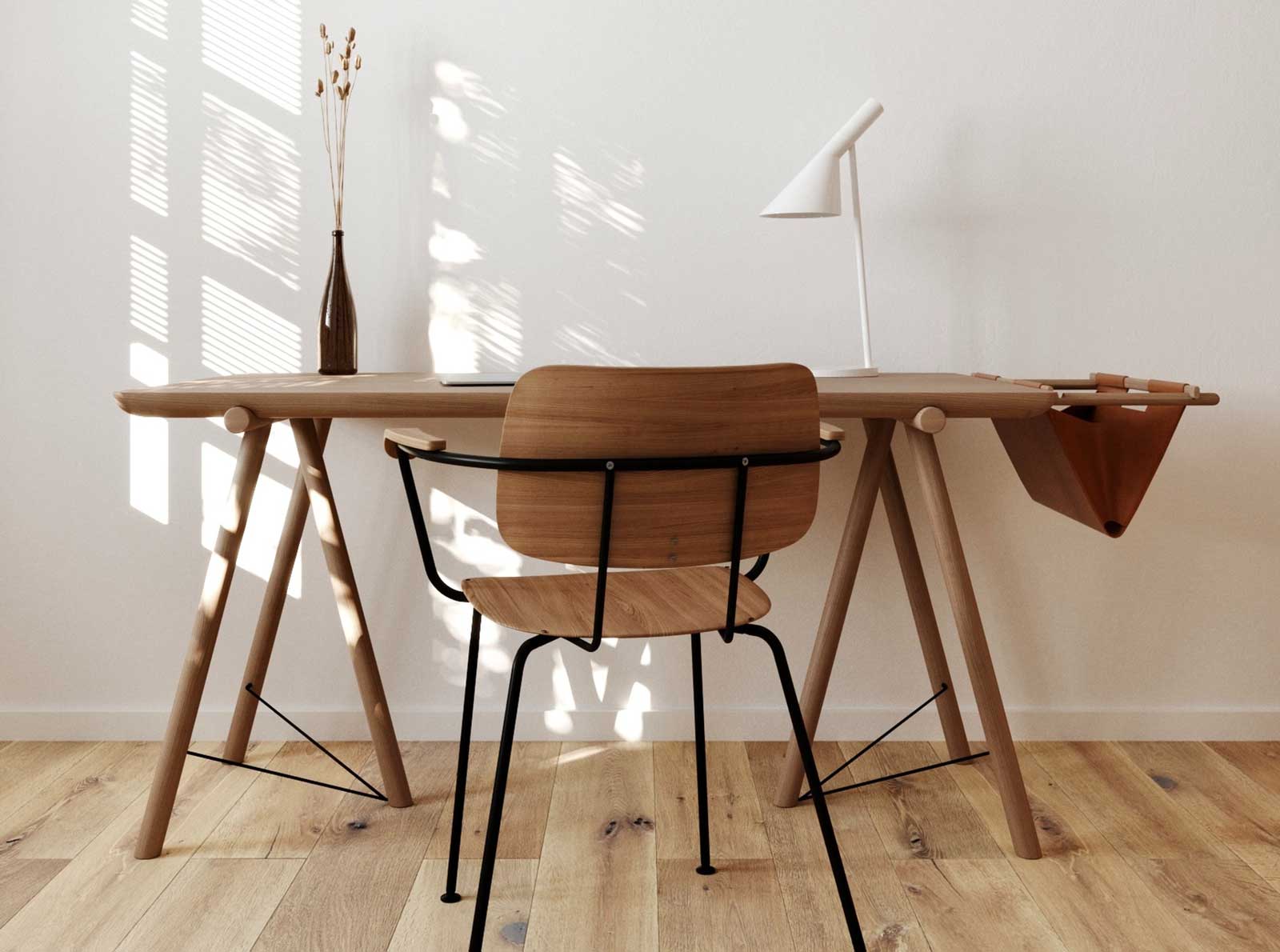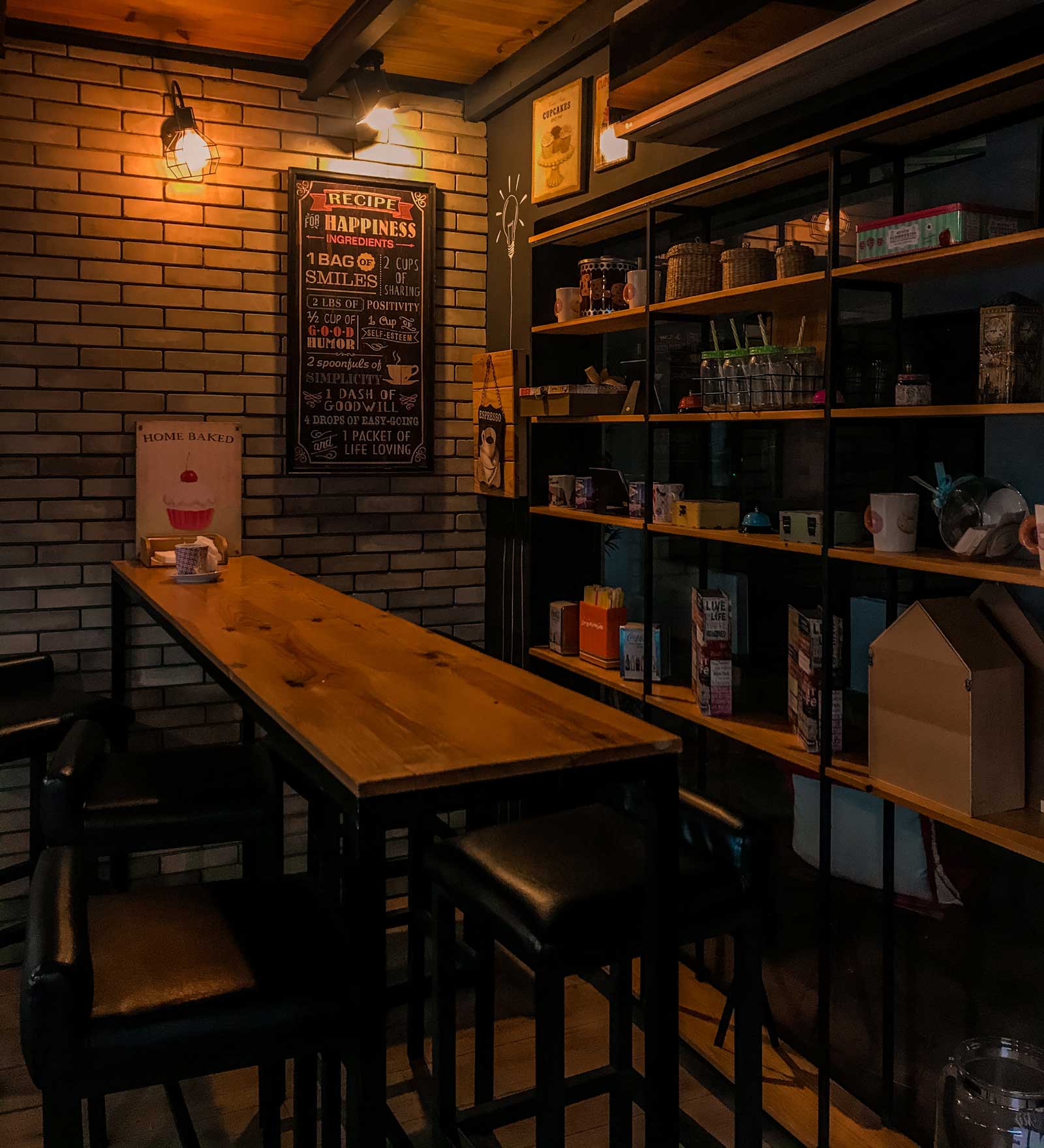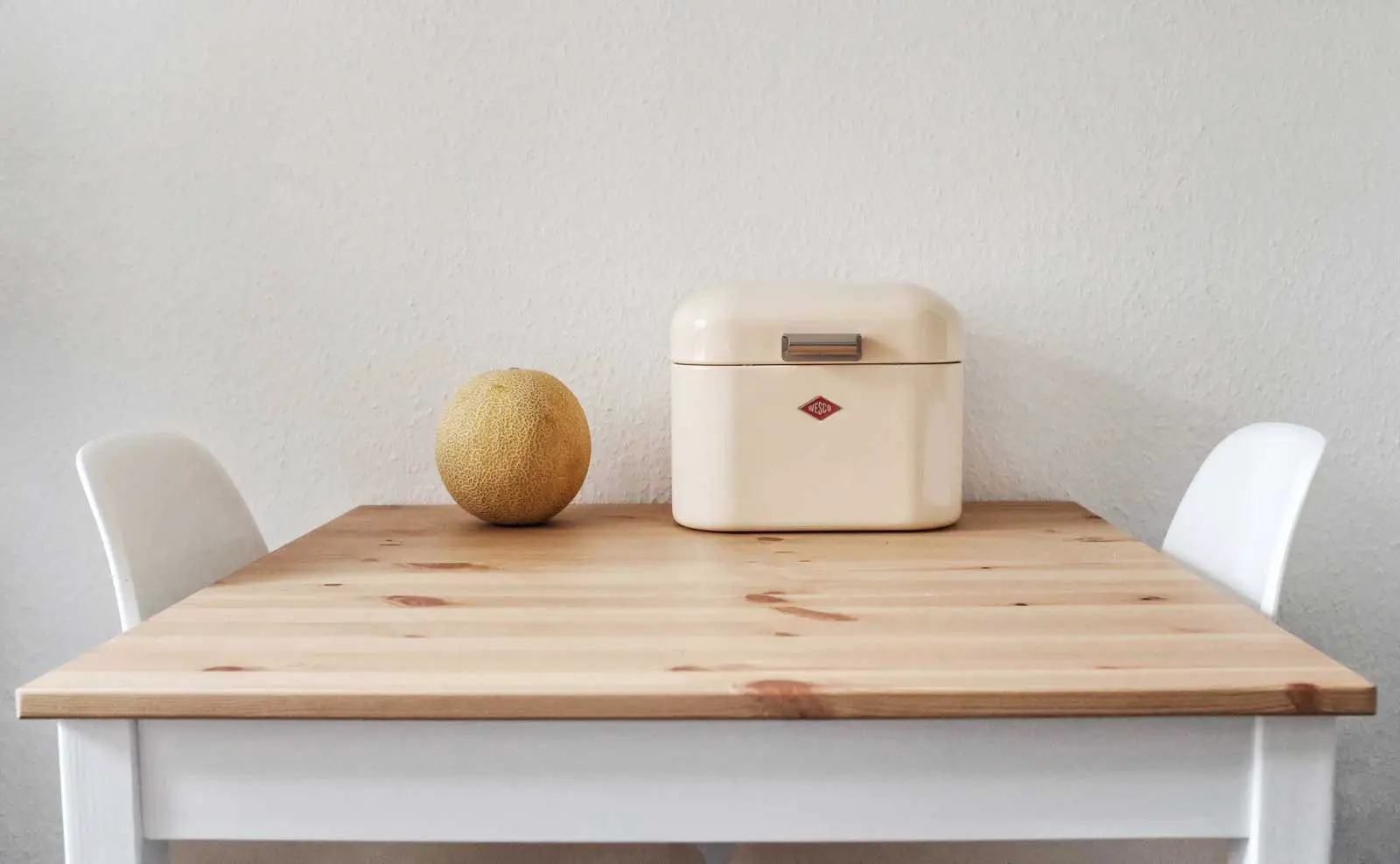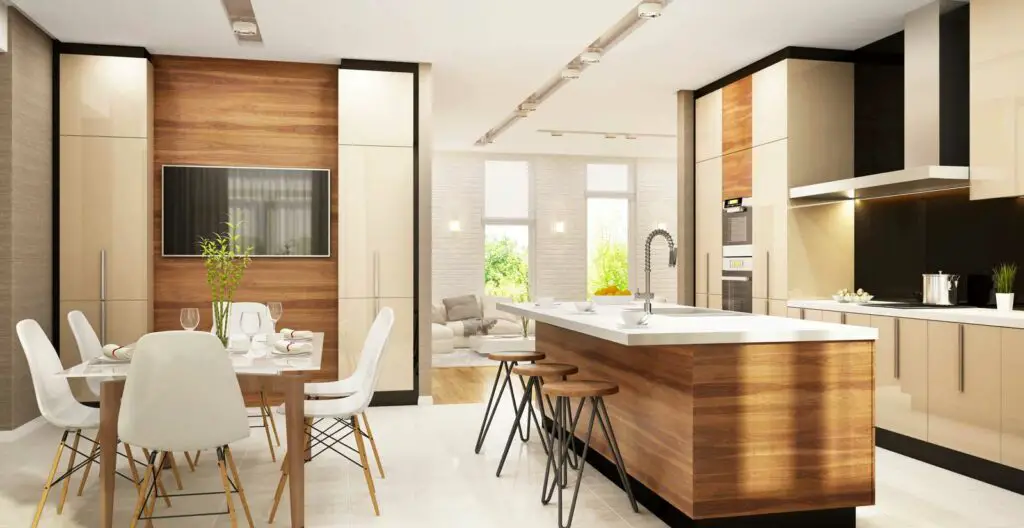Have you ever wondered if there’s a specific height for your desk or kitchen counter? You’re not alone. Different heights may be better suited to your body type and personal preference on the desktop and in the kitchen. Of course, it all depends on a lot of factors. But there is a difference between desk and counter table heights.
The average desk height is 29 inches. When seated, a desk should be 5 inches above your knee. On the other hand, counters are 20 inches high. However, many people choose to install 36-inch-high counters because they’re taller than most stools and give more space for storage underneath.
By the way – before we get too far along here, if you want to connect with other homeowners and builders and get more great ideas for your home to make your space the best join my free private Facebook group, Remodel Reality here.
How high is a desk table?

When you’re seated at your desk, you want to be comfortable—and not just for the sake of your back. If you’re hunched over your work surface in an uncomfortable position, it will be hard to focus on what you’re doing.
So how high should a desk table be?
Some experts recommend that a desk table should be at a height where your elbows are bent at 90 degrees—that way, you can use your entire arm to write. Others say it should be at eye level, so they don’t have to look down while working. Still, others say it should be below waist level, so you can sit comfortably and still see your writing.
I know for myself, I need flexibility, that’s why my personal desk is an adjustable standing desk where I’m available to set it at a variety of heights so I’m not in any one position for long periods of time.
Desks can be 27 inches to 30 inches tall. With leg heights of 26 inches to 28 inches, and a top surface around 1 to 2 inches tall, the height is ideal for most people.
The height of the table will depend on what type of chair you use. If you use a standard chair, then 27 inches is probably best. However, custom-height desk legs of around 30 inches might be better if you want more comfort and support.
Desk height table legs should be 26 inches to 28 inches tall—and this is important because if the leg height is too low, then your feet will likely dangle and make it difficult for you to sit comfortably at the desk. It can also cause strain in your back muscles over time.
Finally, the top surface should be around 1 to 2 inches tall, ensuring enough space between the keyboard and mouse when they’re in use (so they don’t touch each other).
How tall should a counter height table be?

Research shows that the average height of an American is 5’4″. So it means that when a person’s seated at a counter height dining table, their eyes will be about 47 inches from the floor. But, of course, that’s assuming they’re wearing shoes—and shoes are necessary for this venue.
Counter height tables are typically between 30 and 36 inches high. They should be at least 18 inches off the floor to allow people to sit comfortably on stools or chairs.
Kitchen counter heights are usually 36 inches high, which is a lot higher than a standard dining table height, so these kinds of tables are great for taller people, or those who want to use a taller chair or counter height stool.
But there are other considerations to take into account. For example, if your guests are sitting with their backs against a wall or facing each other, they’ll need more space between them and their chairs than facing out toward the rest of the room.
If they’re going to be facing out, they’ll need less space between them and their chairs because they can see each other clearly without straining their necks too much (which is bad news).
In addition, if you’re going to use counter height stools, you will want to look for those with a stool height around 24-26 inches tall.
How tall should a bar height table be?

The height of your table varies depending on the type of seating that you’re planning to use and what the heights of those who will be sitting at it are.
Because standard table heights are generally between 28-32 inches, they’re virtually always a good choice because they’re so versatile.
Bar height tables are typically between 42 and 48 inches high. The height of the table depends on how many people will be sitting at it.
Bar height tables should be 40-42 inches tall which is quite a bit taller than standard height tables which are usually somewhere around 28-30 inches tall. Bar height tables are becoming increasingly popular in homes and businesses alike.
They offer a variety of benefits over traditional, lower tables. For many people, bar stools are more comfortable than chairs. The average bar stool height is around 28-30 inches tall.
This can be especially helpful for people who are taller or shorter than average.
In addition, bar tables tend to be more versatile than traditional tables. They can be used as a place to eat, drink, work, or just socialize.
It’s easy for a crowd to easily gather and lean on a bar height table, like a pub table.
My wife absolutely adores pub tables and we’ve got one in our own breakfast nook. They’re not a great solution for formal dining rooms, but for eat-in kitchens, and breakfast nooks, they are fantastic.
Whether you’re looking for a place to enjoy a meal with friends or a place to get some work done, a bar height table is an excellent option.
How to choose the best table heights

If you’re looking for a new kitchen table, the first thing to consider when choosing table heights is the type of table you need and the available space in your dining area.
When it comes to picking a new table and choosing the best table heights for small spaces, there are a few things to keep in mind.
For instance, bar height tables and stools are a great option if you want to create a more intimate dining experience. Alternatively, taller tables are ideal for small spaces.
Not only do they help add a cool feel to your room, but they also make the most of your available space. However, it’s important to consider how you’ll be using the table before making a final decision.
If you entertain often, for example, you might want to opting for a bar table that can easily be moved out of the way when necessary. Ultimately, the best table height for small spaces will depend on your specific needs and preferences so that you make sure you have enough room.
So will it be a bar-height table? A standard dining height table? A kitchen counter table? Or a pub height table? Each of these uses has different considerations regarding choosing the right height.
A bar-height table should be 40 to 42 inches tall.
For a bar-height table (especially if you’ll be standing behind it serving drinks), it’s essential to ensure that your legs are comfortable and not exhausted from sitting or standing in one place for too long.
For standard dining height tables, they are usually between 28 and 30 inches tall, making them ideal for most dining rooms and kitchens. In addition, they work well with counter stools or standard dining chairs because they offer a comfortable position without having to sit too low or too high.
Kitchen counter tables can range in height from 24 to 30 inches. So they’re perfect if you’d like a table that will fit under your cabinets while still fitting four chairs around it comfortably.
Kitchen counter tables are designed to be used at kitchen counters—hence their name. These tables also allow people who might have trouble reaching higher counters.
Finally, pub height tables are usually 30 inches tall from the floor.
This height is just below the average height of an adult and allows for seating at the table without having to stand.
Summary of Standard Desk and Counter Table Heights
| Table Type | Average Height/Range (Inches) |
| Bar Height Dining Table | 40″ – 42″ |
| Standard Height Dining Table | 28″ – 30″ |
| Kitchen Counter Table | 24″ – 30″ |
| Pub Table | 30″ |
What is the standard scale for desk heights and counter height seats?
Do you go for a desk or counter height when building or buying a new chair?
Although the two seat height options were created to be equal in inches, today’s standard scale for counter height seats is shorter than the standard scale for desk height. Therefore, if you buy a new office chair, you may want to evaluate the chair seat height that best suits your needs.
Here are the major seats and their heights.
Bar Height Stools
So, you’re looking for a bar stool that’s the perfect height. You need to be able to sit down but also be able to reach your drinks. That’s a tall order.
Bar height stools are one of the most popular options for seating at a bar. However, you might wonder what the standard scale is for bar height stools.
Luckily, there are some standards in place that have been used for years to determine what makes a good bar height seating. Here’s what you need to know:
The standard bar height stool is 28 to 30 inches from the floor to the top of the seat cushion.
It means that if you’re 6 feet tall, you’ll want a stool with a seat at least 21 inches off the ground—and if you’re 5 feet tall? You’ll want something closer to 18 inches off the ground, especially if you’ll be sitting in front of a bar height dining table that is usually 40 to 42 inches tall.
The standard scale for bar height stools means that there are plenty of great options out there for everyone.
Dining Height Stools
Standard dining height stools are usually made from wood or metal and designed for home use. You can use them at a kitchen island, standard dining tables, bar, or even desk if you have one in your office.
You can also use them outside on your patio dining sets or deck if you want to enjoy some fresh air while still having access to your hot tub or grill.
The standard scale for dining height stools is 18 to 23 inches. While standard dining-height tables have a height of 28 to 30 inches.
Meanwhile, counter dining stools are usually made from wood or metal and are designed for commercial settings such as restaurants, cafes, and bars. Or even in private homes if you have an open-concept kitchen/dining area where guests can watch you prepare their meals!
Counter Height Stools
When shopping for counter height chairs, you’ll often see two numbers listed: the seat height and the overall height. That’s because there’s more to choosing a counter height chair than just ensuring it has a high enough seat.
The standard scale for counter height stools is 24 to 26 inches, the generally accepted minimum height requirement.
But that doesn’t mean that every chair with a 26-inch seat is suitable for your space. A generally accepted idea is to choose a chair with an overall height that matches your counter height table—usually 34 to 36 inches in height—perfectly so that when you sit down, your knees will be at or just above knee level.
Summary Of Standard Stool Heights
| Stool Type | Average Height/Range(Inches) |
| Bar Height Stools | 28″ – 30″ |
| Dining Height Stools | 18″ – 23″ |
| Counter Height Stools | 24″ – 26″ |
| Kitchen Height Stools | 27″ – 29″ |
What Is The Difference Between A Table And A Desk?

When searching for a desk, it can be confusing to know the difference between a table and a desk. However, they both accomplish the same purpose, so why does it matter? Well, here’s the answer:
The standard height of a desk is around 29 to 30 inches, while the average height of a table is about 30 inches. Therefore, a desk serves lesser purpose when compared to a table that has shelves and drawers.
It means that if you’re looking for a piece of furniture that lets you work comfortably in front of your laptop computer, you want to get yourself some good-quality desks.
On the other hand, tables are great for kitchen use, but if you want to place them in your office, your computer, or laptop, they can work too.
Next Steps
Want to join others who are creating the most amazing home redesigns & renovations and get more tips, tricks and hacks on how to make your home the best it can be?
Join my brand new free private Facebook group, Remodel Reality to connect with other people like you to make your space the best!






